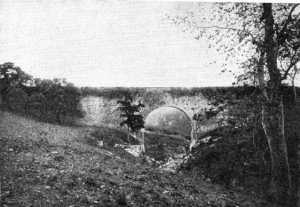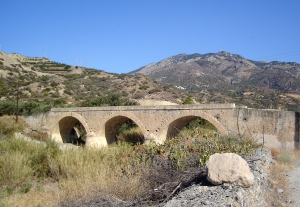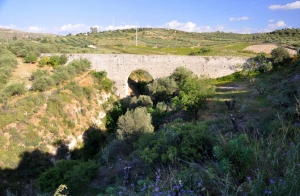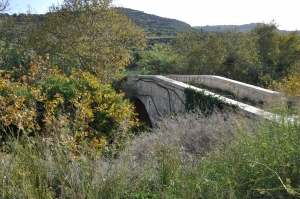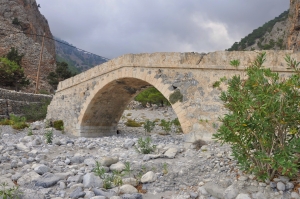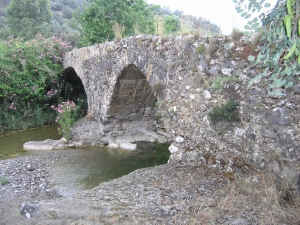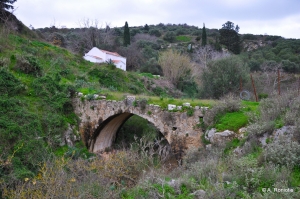Inside the ravine formed northeast to Silamos village, we meet the traces of the second-in-row bridge of the colossal Venetian aqueduct of Morozini. The aqueduct transferred the water of the springs of Archanes to Candia, the current town of Heraklion. Unfortunately, almost nothing is preserved from the bridge.
The stone bridge of Kryopotamos, near Myrtos, was built in 1884 and has three large arches. It is such a masterful construction, so that it has been declared as a work of art.
It is one of the aqueducts of the 15km long Venetian aqueduct starting from Archanes and carrying water to the Fountain of Lions, in the center of Heraklion. There is one emblem and an inscription at the central part of the bridge.
The stone built bridge and the watermill at Kakia Rahi position are both monuments protected by the Greek State. They are landmarks in the area, associated with memories of the locals. They are both special constructions that combine rigorous morphological solutions.
Near Agia Roumeli there are two arched stone bridges. Here we see a Venetian stone arched bridge that has been secluded in the stream, with both of its sides destroyed. We can still discern a auxiliary arch which has been filled by the debris of the river. There is another smaller bridge a few meters to the north.
A small stone bridge at the upper part of Astrakiano gorge. The bridge was once crossed by people who wanted to reach Agarathos monastery from Astraki.
Near Agios Ioannis village at Amari district, we meet the elaborate four-arched bridge of Manouras or Omeroustas that bridges the junction of River Ligiotis and the torrent Mounouha. The bridge, built in the period 1828-1840, has suffered considerable damage from time.
This is a small stone bridge that connects the two sides of a small canyon that locals call Sambathiano Chavgoudaki (small gorge of Sambas). Next to the bridge there is the church of Agios Mamas.











